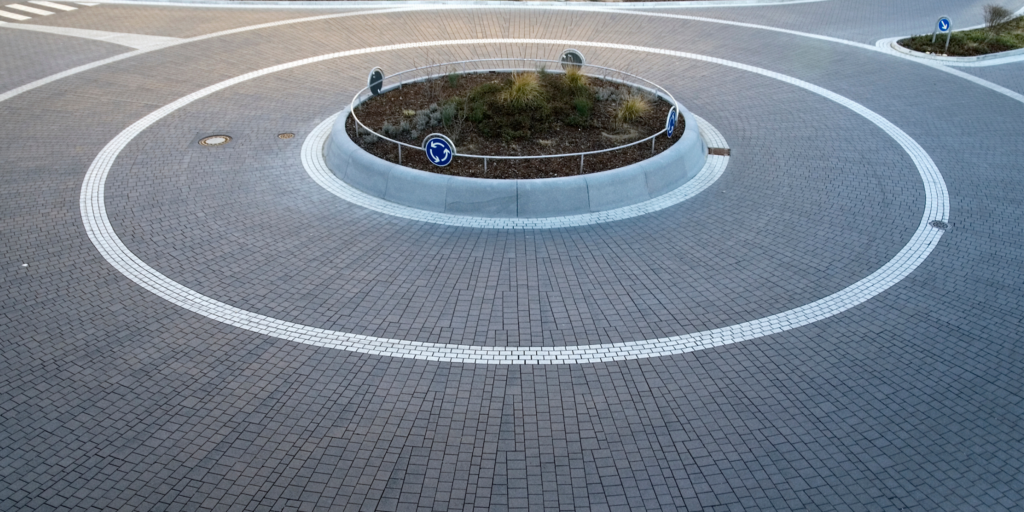EXPLAINER: Why does the gov’t want to put a rotunda in UN Avenue?

Stock Photo
CEBU CITY, Philippines – Motorists passing through the junction of U.N. Avenue and D.M Cortes Street in Mandaue City were surprised last Sunday, April 14, to see a mock-up roundabout in its center.
It was an ‘experimental rotunda’ designed supposedly to ease traffic congestion there.
However, the experiment ended in a gridlock in the area, with motorists complaining of heavy, bumper-to-bumper traffic on a Sunday afternoon.
READ: ‘Experimental rotunda’ in Mandaue : UN Avenue ’roundabout’ hit by motorists
The following day, traffic enforcers removed the barriers that formed the roundabout, with the Mandaue City Government announcing its plans to improve the proposal like transforming the junction into a flared intersection.
But why did the government want to have a rotunda there? And were there other proposals made to address traffic problems in one of Metro Cebu’s busiest intersections?
The UN Avenue Junction
D.M. Cortes Street, previously Plaridel Street, and U.N. Avenue are two of the busiest highways in Mandaue City. The two intersect at the junction called U.N. Avenue Junction located at the foot of Marcelo Fernan Bridge.
READ: Road flaring to be implemented at Mandaue runabout system
It serves as the gateway to mainland Cebu for drivers and passengers from Mactan Island and provides access to the nearby Cansaga Bridge that connects the coastal areas of Mandaue City and Consolacion town.
Addressing Traffic Woes
Due to the volume of vehicles passing along both U.N. Avenue and D.M. Cortes Street, traffic congestion has become a perennial problem at its junction.
The existing traffic lights there barely solved this problem, prompting the government, then and now, to find ways to address it.
READ: Tri-level Interchange in Mandaue aimed at decongesting traffic in key roads
Before a roundabout system, there was a plan to erect a tri-level infrastructure project that included an underpass, a flyover, and a service road there.
The project was called the U.N. Avenue Depress Project. Spanning up to 932 meters, it will cover the intersection of the highway and D.M. Cortes Street.
The U.N. Avenue Depress Project was first proposed in late 2017, with construction slated to start the following year.
READ: ‘Portable rotundas’ make rounds of Metro Manila
Despite opposition from business leaders, the Department of Public Works and Highways in Central Visayas (DPWH-7) awarded the project to a contractor.
Legal battle, Capitol’s intervention
By 2019, construction began but it was short-lived as the implementing agency and the contractor got into a row that ended up in trial courts.
Progress for the tri-level project went to a grinding halt. The stalled construction only resulted in inconvenience and hassle to motorists, including local officials like Gov. Gwendolyn Garcia who first intervened to fix the potholes and other damages left by the abandoned construction in 2022.
The province even acted as a liaison between DPWH-7 and the contractor to settle their dispute and took it upon themselves to repair the highway.
Roundabouts & rotunda
Lately, the Capitol revealed its proposal of putting up a roundabout as a solution to the traffic issues on the U.N. Avenue junction.
Then last Sunday, together with the Mandaue City Government and DPWH-7, they conducted a dry-run to see its feasibility. However, it drew mixed reactions, with some motorists complaining that it only led to ‘worsening traffic conditions’ in the area.
Rotundas or roundabouts are intersections but circular in form, according to the Washington State Department of Transportation.
Advantages and disadvantages
Rotundas or roundabouts can be a good alternative to traffic lights as these allow traffic to flow uninterrupted in a junction, unlike those with traffic lights, said Engr. Nigel Paul Villarete, former Cebu City administrator and an expert in urban planning in Cebu.
On the other hand, these take up so much space that in order for them to be effective, city planners need to find bigger and larger areas to place them, Villarete said.
When constructing one, engineers must also ensure that its capacity is equal to or more than the roads leading to it, Villarete said.
“A rotunda is an interchange. Kung gamay imong (dalan sa rotunda unya lapad ang mga roads leading to it), magkaboang gyud,” he added.
Another factor urban planners have to consider in having a rotunda is the length of the diameter of its center circle, said Villarete.
Rotundas and modern cities
Rotundas are not new to Metro Cebu. In fact, the most famous one is located at the heart of Cebu City – the Fuente Osmeña Circle.
There is also one in Carcar City in the south and another in Danao City in the north.
But modern cities around the world have started to do away with rotundas or roundabouts, according to Villarete, to maximize space.
“The biggest requirement of a rotunda is to have enough space… Rotundas are not better nor worse. It’s actually a good alternative (to traffic lights) however, we have to understand it’s an alternative that require space,” he explained.
But some areas, like Australia and England in the United Kingdom, still keep their roundabouts as they have gotten used to these types of intersections.
“It’s a matter of naandan,” Villarete said.
If local governments wanted to have a rotunda, the former Cebu City administrator and urban planning expert advised them to do a thorough and proper evaluation first.
“Do a proper technical, financial, and economic evaluation. Those three. They must not make a decision based kay you like it or not,” said Villarete.
Disclaimer: The comments uploaded on this site do not necessarily represent or reflect the views of management and owner of Cebudailynews. We reserve the right to exclude comments that we deem to be inconsistent with our editorial standards.
